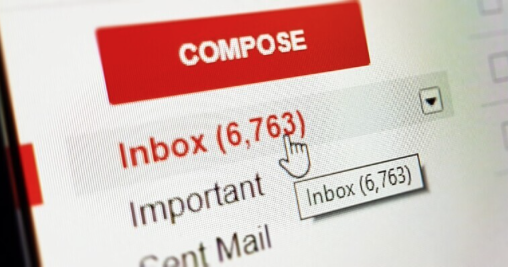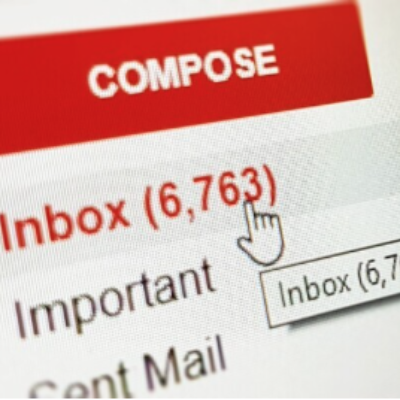
Owning your audience is like having the keys to the kingdom. Unlike social media platforms, where algorithms and policy changes can leave you scrambling, an email list gives you direct access to your subscribers. You decide what they see and when they see it. That’s some serious control that pays off, especially in the long run.
Comparing email marketing to social media marketing is like comparing apples and oranges, but email often comes out on top for direct engagement. While a social media post might get lost in the noise, emails land directly in your subscriber’s inbox, offering a personal touch. Think about it: who doesn’t check their email daily?
The long-term value of an email list is all about relationship building. With each email, you get an opportunity to engage, educate, and convert your audience. Unlike fleeting social media interactions, emails allow for in-depth storytelling and a consistent message. It’s like having a friendly ongoing chat with folks who are genuinely interested in what you have to say.
Setting Up the Foundation: Essential Tools and Platforms
Choosing the right email service provider is like picking the right partner. It sets the tone for your entire email marketing journey. Think about features like automation, templates, analytics, and customer support. There are great options out there like Mailchimp, Constant Contact, and ConvertKit that can cater to different needs.
Basic tools for email list management can save you a ton of time and headaches. Look at software that offers easy list segmentation, customizable sign-up forms, and straightforward analytics. These features help streamline your efforts and focus more on creating great content.
Email marketing automation isn’t just for the big leagues. Even if you’re just starting out, automation can help you send timely, relevant messages without needing to hit “send” every time. Things like welcome sequences, birthday emails, and follow-ups can all be set up to run on autopilot. It’s like having a personal assistant who works 24/7.
Creating a Value Proposition: What Will You Offer?
Understanding your audience’s needs is your first step. You can’t offer something valuable if you don’t know what your audience finds valuable. Conduct surveys, look at your competitors, and engage directly with your audience to gather insights. This feedback can guide you in crafting offers that resonate.
Incentives are the bait to attract subscribers. Think beyond the generic ‘sign up for our newsletter.’ Offer exclusive content, discounts, free trials, or even access to a private community. These perks make signing up a no-brainer for your target audience.
Crafting compelling lead magnets is an art form. Ebooks, checklists, and templates are tried-and-true options, but they need to be high-quality and genuinely useful. Imagine yourself in your subscribers’ shoes: what kind of freebie would make you excited to join an email list?
Consistency in messaging is crucial. Make sure your value proposition aligns with what you consistently deliver. If you promise exclusive content, ensure that your emails consistently include it. This builds trust and keeps your audience engaged.
Test different value propositions to see what works best. Not every incentive will hit the mark, so be prepared to tweak and refine. Use metrics and feedback to gauge effectiveness and don’t hesitate to make changes for better results.
Captivating Content: Crafting High-Quality Emails
Nailing your email content is where the magic happens. Quality content keeps your subscribers hooked and encourages them to open every email you send.
Personalization and segmentation can make a world of difference. By tailoring your messages to specific segments of your audience, you make each email feel more relevant and engaging. Use names, past behaviors, and preferences to craft tailored messages that speak directly to each subscriber.
The role of visuals in email marketing can’t be overstated. Clean, attractive design elements like images, infographics, and gifs can break up text and make your emails more appealing. But don’t overdo it—balance is key. Too many visuals can cause emails to load slowly or be marked as spam.
Storytelling works wonders in email marketing. Share anecdotes, success stories, or behind-the-scenes looks that give your audience a peek into your world. Stories are memorable and can help build a deeper connection with your readers.
Clear calls-to-action (CTAs) are essential. Whether it’s a button, a link, or a simple prompt, make it easy for your readers to know what you want them to do next. Use action-oriented language like “Get Your Freebie Now” or “Join the Community.”
Proofreading your emails is a must. Typos and grammatical errors can erode trust. It’s worth taking the extra time to ensure your emails are polished and professional. Consider tools like Grammarly or Hemingway to help catch mistakes before hitting send.
Effective Promotion: Strategies to Attract Subscribers
Utilizing social media to grow your email list taps into a massive potential audience. Share your lead magnets and sign-up forms on your social profiles. Use Facebook groups, Instagram stories, and Twitter chats to spread the word. Try posting teasers or snippets of the exclusive content subscribers will get.
SEO techniques for lead generation can bring in subscribers who are already interested in what you have to offer. Optimize your landing pages and blog posts with relevant keywords, and make sure your sign-up forms are prominently displayed. A well-placed call-to-action in a high-traffic blog post can make a huge difference.
Collaborations and partnerships with influencers or other businesses can boost your reach. Consider guest blogging, co-hosting webinars, or cross-promoting each other’s offers. These partnerships can expose your email list to a whole new audience that’s already trusting of your partner.
Offline methods shouldn’t be overlooked. If you’re at a trade show, event, or even a local meetup, have a physical sign-up sheet or a QR code people can scan to join your list. Face-to-face interactions can be incredibly effective at converting people into subscribers.
Referral programs can turn your subscribers into ambassadors. Offer rewards or incentives for subscribers who bring in new members. This not only helps grow your list but also fosters strong community engagement.
Compliance Matters: Understanding Email Marketing Laws
Navigating email marketing laws is like walking a tightrope. You want to build your list, but you’ve got to play by the rules. The GDPR and CAN-SPAM Act are the big players here. Understanding these regulations can save you from hefty fines and keep your audience’s trust intact.
The GDPR primarily affects anyone dealing with European Union citizens. It’s all about consent, transparency, and data protection. Make sure you get explicit permission before adding someone to your list and be clear about what they’re signing up for. Include easy-to-find privacy policies and options to opt out.
The CAN-SPAM Act applies more broadly, especially in the U.S. It sets guidelines for commercial emails, such as not using deceptive subject lines and including your physical address in every email. One-click unsubscribes are not just good practice; they’re the law.
Being transparent about how you’ll use email addresses builds trust. Let your subscribers know exactly what they’ll get and how often you’ll email them. Over-communicate at the start to avoid misunderstandings later.
Regularly cleaning your list keeps you compliant and your readers engaged. Remove inactive subscribers, honor opt-out requests promptly, and make sure your list is up-to-date. It’s not just a legal requirement; it also boosts your email performance metrics.
Using double opt-in processes can help with compliance. This method asks new subscribers to confirm their email address by clicking a link in a follow-up email. It’s an extra step, but it ensures that everyone on your list really wants to be there.
Analyzing and Optimizing: Getting the Most Out of Your Email List

Tracking key metrics helps you understand how your emails are performing. Open rates, click-through rates, and conversion rates are the big three. These numbers tell you how engaged your audience is and where you can improve.
A/B testing is your best friend for figuring out what works. Test different subject lines, email designs, and calls-to-action. Even small changes can lead to big results. With A/B testing, you can make data-driven decisions and continually refine your approach.
Learning from unsubscribes is just as important. Look at the patterns. If a particular type of email leads to a lot of opt-outs, it’s a sign that something needs tweaking. Don’t get discouraged—use this info to fine-tune your strategy.
Segmenting your email list can lead to higher engagement. By breaking your list into smaller groups based on behavior, preferences, or demographics, you can send more targeted content. Personalized emails tend to perform better, so don’t treat your entire list as one monolithic audience.
Revisiting your email strategy periodically keeps it fresh. Industry trends change, and so do audience preferences. Plan to review your approach every few months and be ready to adapt. Stagnation is the enemy of growth, so stay curious and flexible.
Constant feedback loops with your audience are gold. Ask your subscribers for their opinions through surveys or simple questions at the end of your emails. They’ll appreciate that you value their input, and you’ll get direct insights into what they love and what they could do without.
Future-Proofing: Keeping Your Email List Engaged and Growing
Regularly updating your content is essential to keeping your audience hooked. Stale content leads to disengagement. Share fresh insights, new products, or upcoming events to keep your emails relevant. Keeping a content calendar can help you plan exciting updates and ensure consistency.
Re-engagement strategies can bring dormant subscribers back to life. Whether it’s a special offer, a compelling question, or a reminder of what they’re missing, targeted campaigns can rekindle interest. If re-engagement doesn’t work, it might be time to clean up your list.
Adapting to changing trends and technologies keeps you ahead of the curve. Email marketing is always evolving, with new tools and practices emerging. Stay updated with industry news, attend webinars, and be open to experimenting with new ideas like interactive emails or AI-driven personalization.
Being responsive to feedback shows your subscribers you’re listening. Implement changes based on what they tell you, and let them know you value their input. This builds loyalty and helps you fine-tune your approach.
Diversifying your reach can also help maintain growth. Look into integrating your email marketing with other channels like SMS or in-app messaging. A multi-channel approach can create a more cohesive customer experience and keep your audience engaged through different touchpoints.
How does your email list do for you? Let us know in the comments below.
All the best
Tony

Hi, my name is Tony and I’m the founder of Free From The Boss. I have been involved in affiliate marketing for a few years now and have made a success out of building online businesses. My aim with this website is to help you build and grow a successful online business for yourself and break free from your boss!

